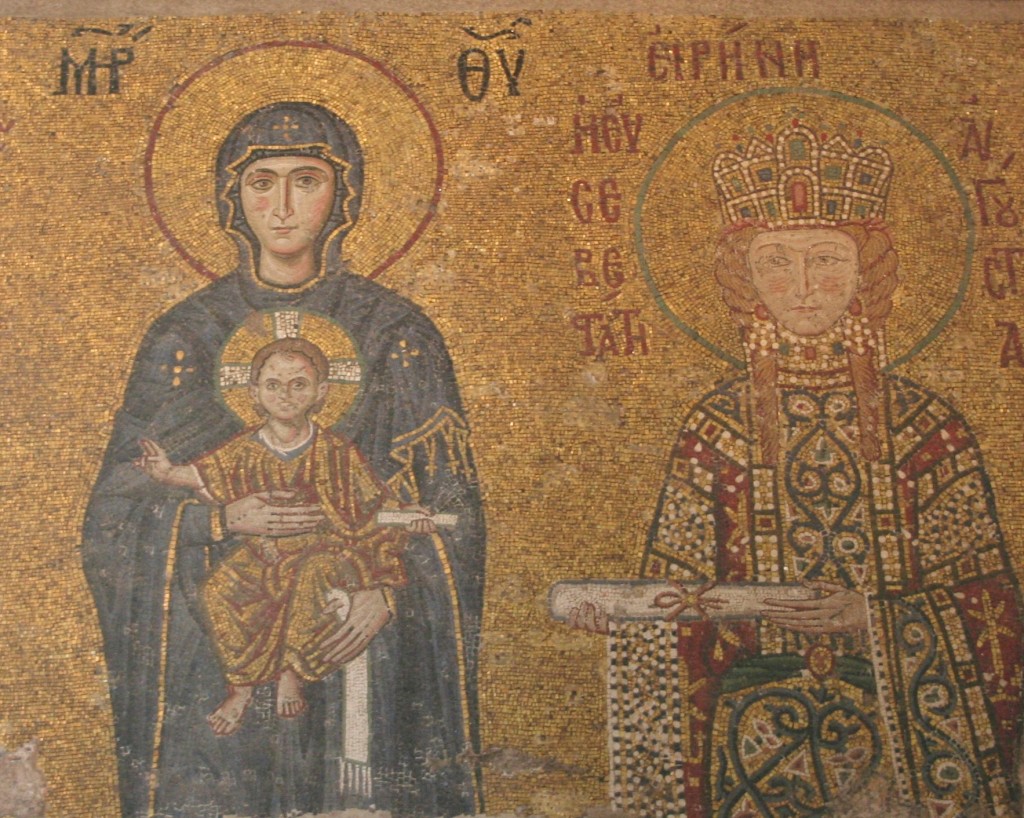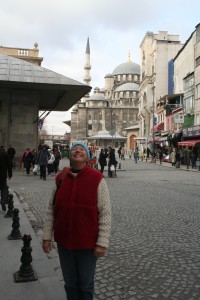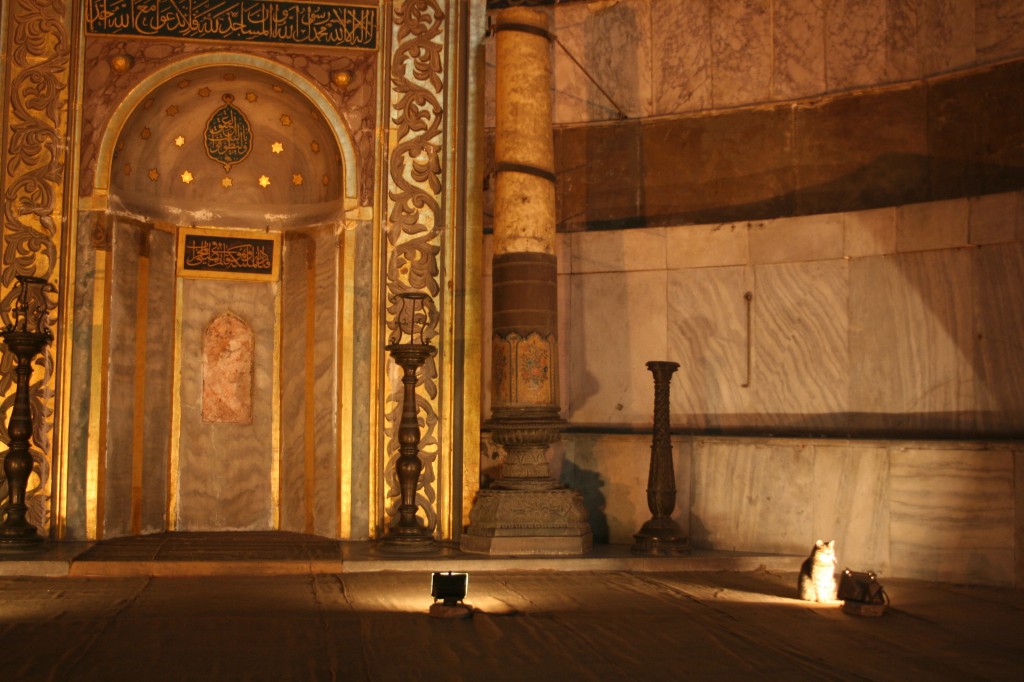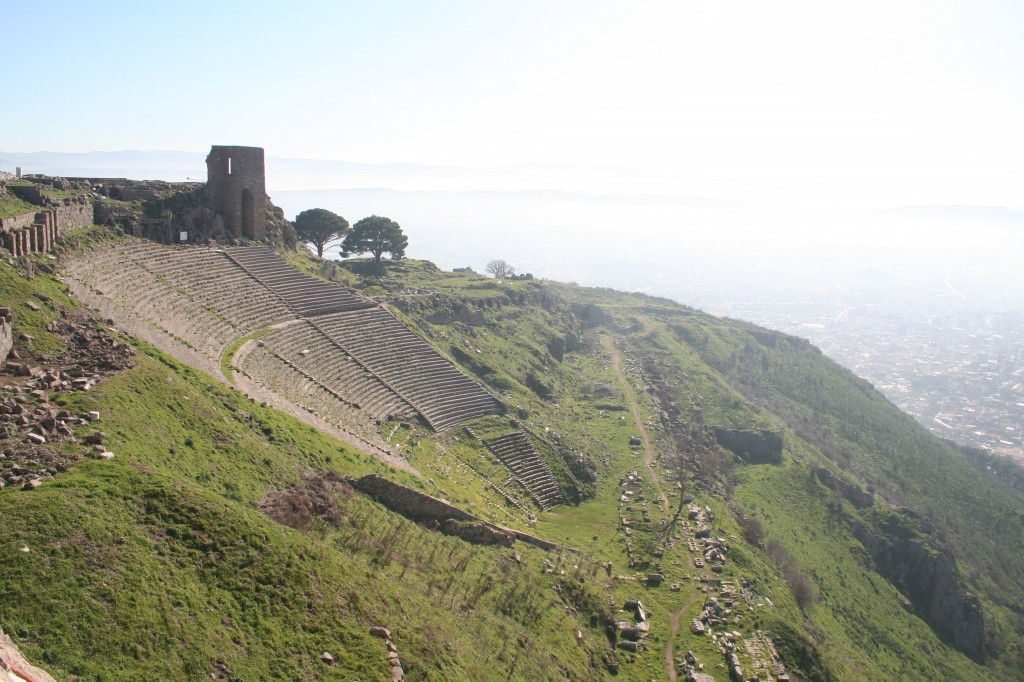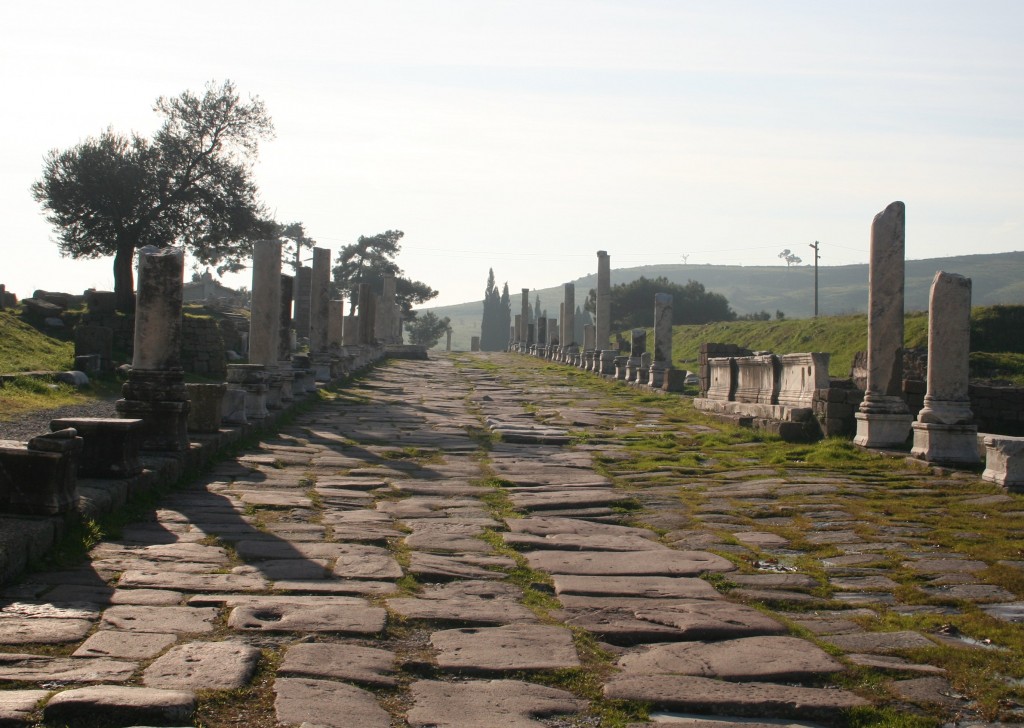
I said yesterday that Zeus had fled the acropolis at Pergamum, but I think one of the city’s other divine patrons still lingers at the bottom of the hill: Asclepius, the god of healing.
Asclepius watches over the ruins of the Asklepion, a healing complex located at the base of the Pergamum acropolis. The site was founded in the 4th Century BC around a sacred spring that still flows. Over the next centuries it became one of the best-known healing centers of the ancient world, second in importance only to Epidaurus in Greece. The influential physician Galen was born in Pergamum and practiced here in the 2nd Century AD, having first made his medical reputation treating warriors in the gladiatorial games of the city.
I had never heard of the Asklepion before visiting it, but I was fascinated by its history and the air of peace that pervades it. Our guide explained that the sick approached the temple via the Sacred Way, a path that started their journey to health. There were strict requirements about who could enter: no one who was near death could come here, for example, and pregnant women were barred as well because childbirth was so dangerous. “It was very important that the Asklepion not lose its reputation as a place where people were cured,” explained our guide. “This was a place of health, not death.”
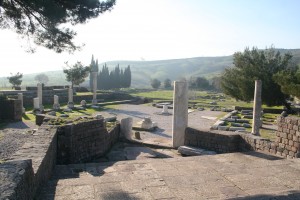
When arriving at the temple, patients would spend several nights in rooms that were meant to induce dreams. Treatments were then determined according to what dreams the patient experienced.
The healing process could include diet therapies, massages, hot and cold mud baths, surgeries, and herbal remedies (OK, blood-letting was also on the menu, but hey, you can’t get everything right). There was even a theater at the Asklepion, to entertain the patients who would often stay for weeks. All of this was done in the belief that healing was a sacred art and that people’s souls needed to be mended as well as their bodies.
Nestled between hills, the Asklepion retains a sense of serenity. Though much of it lies in ruins, the sacred spring still bubbles up from a pipe, the same spring that once was visited by such luminaries as the Roman emperor and philosopher Marcus Aurelius, as well as countless ordinary people seeking cures for their physical and mental ailments.
Our modern hospitals could take some lessons from the Asklepion, couldn’t they? Here’s a brief video that gives a sense for the peace that reigns here, even after two millennia.


